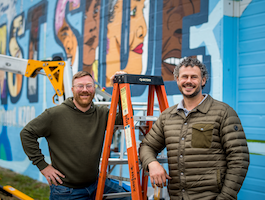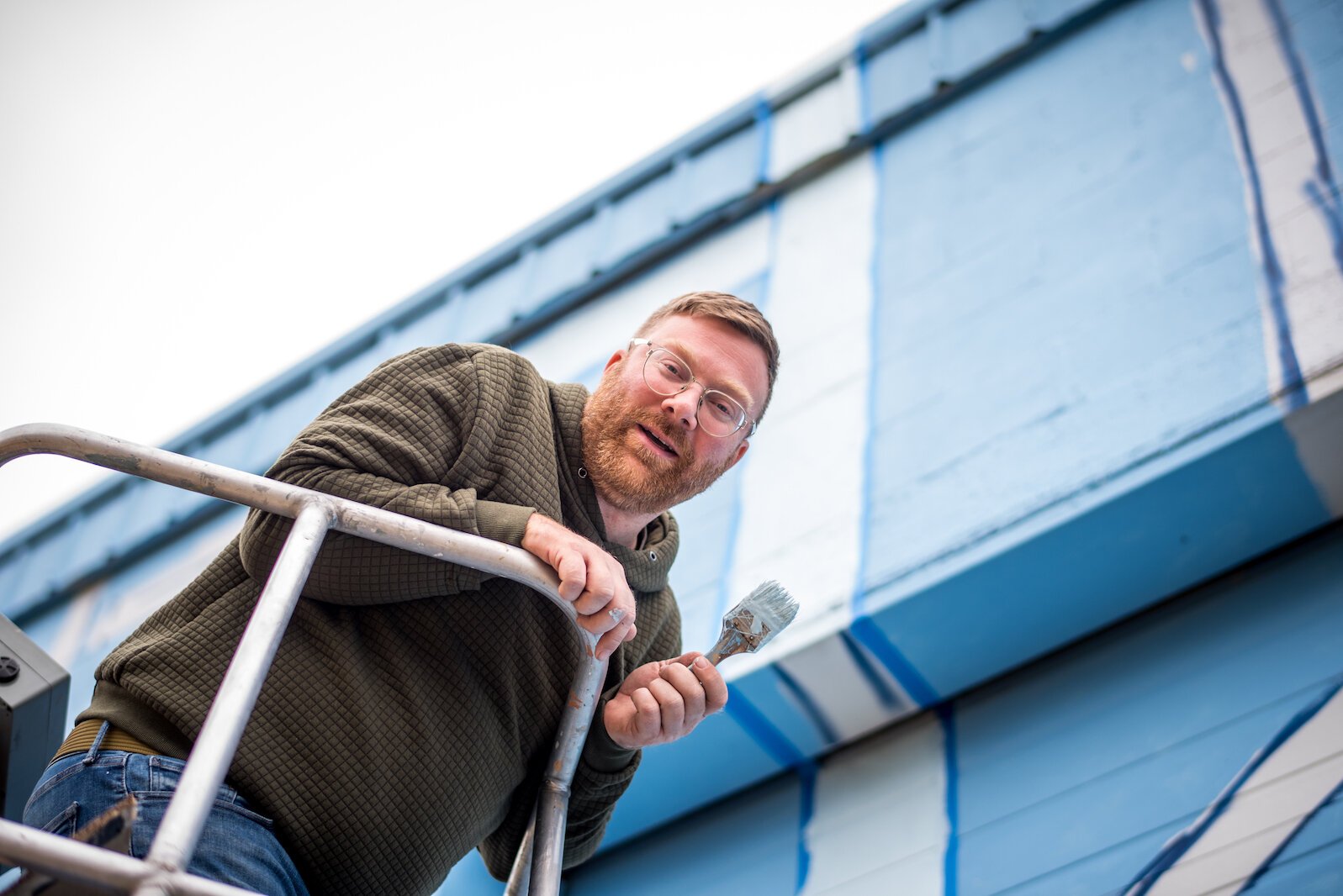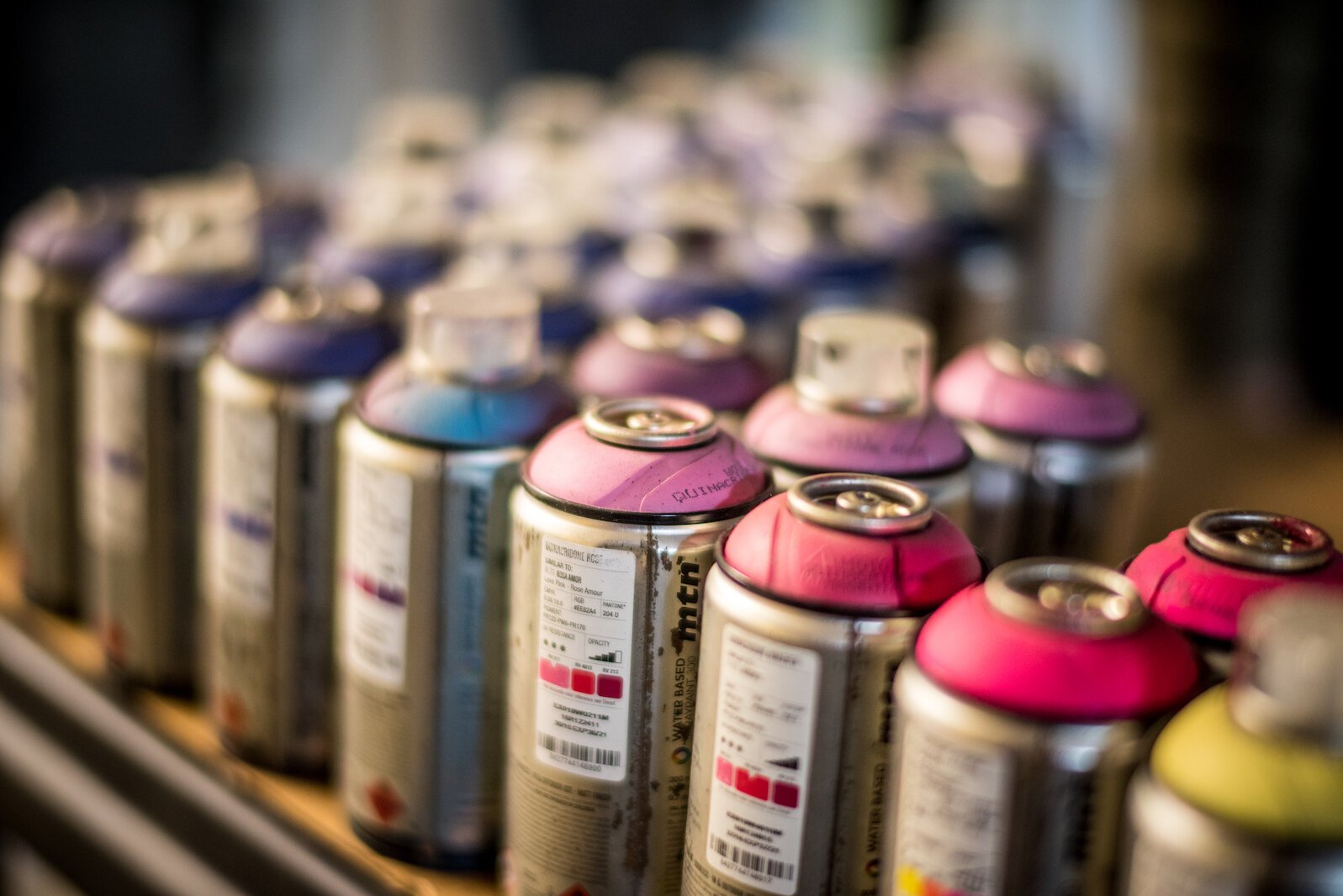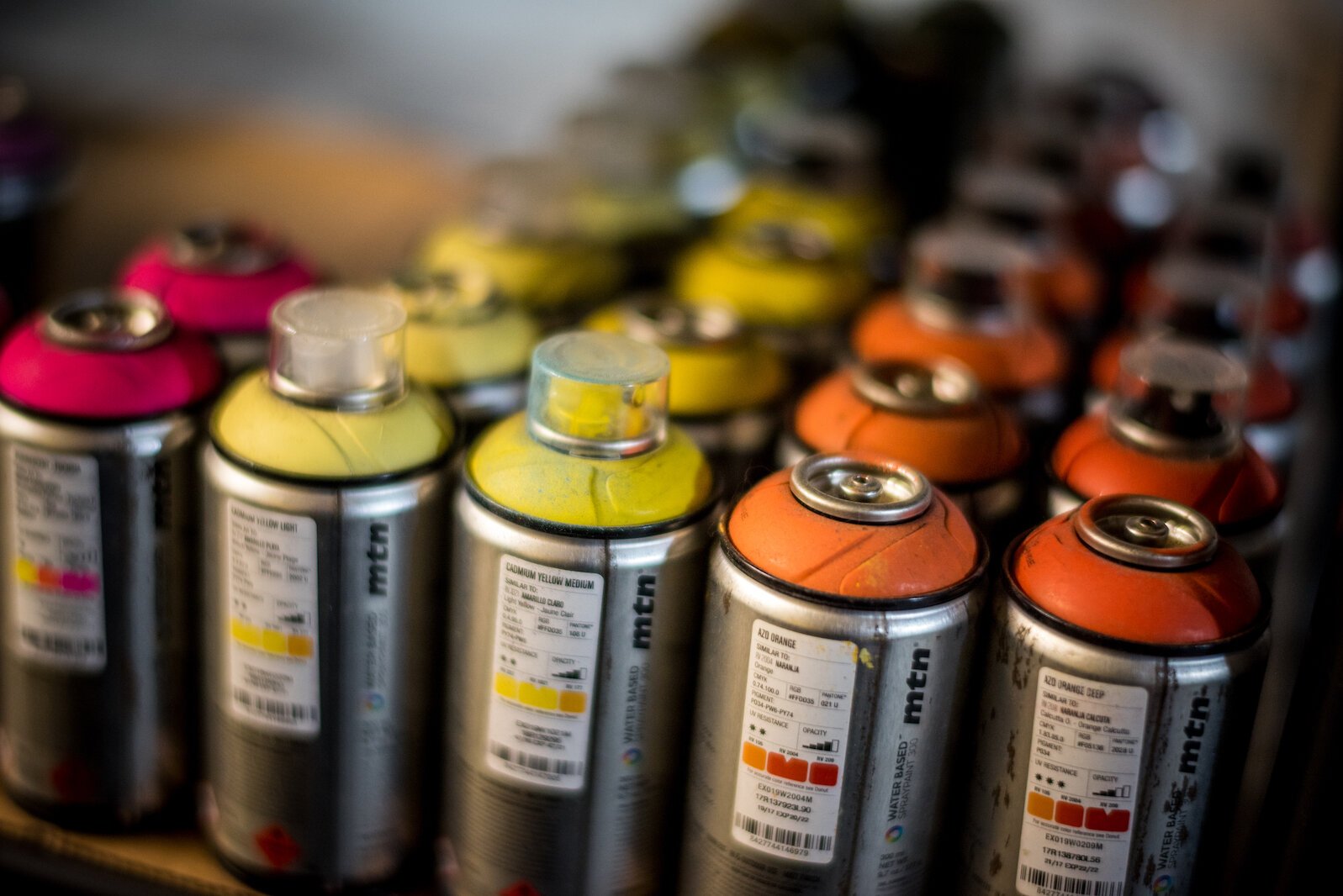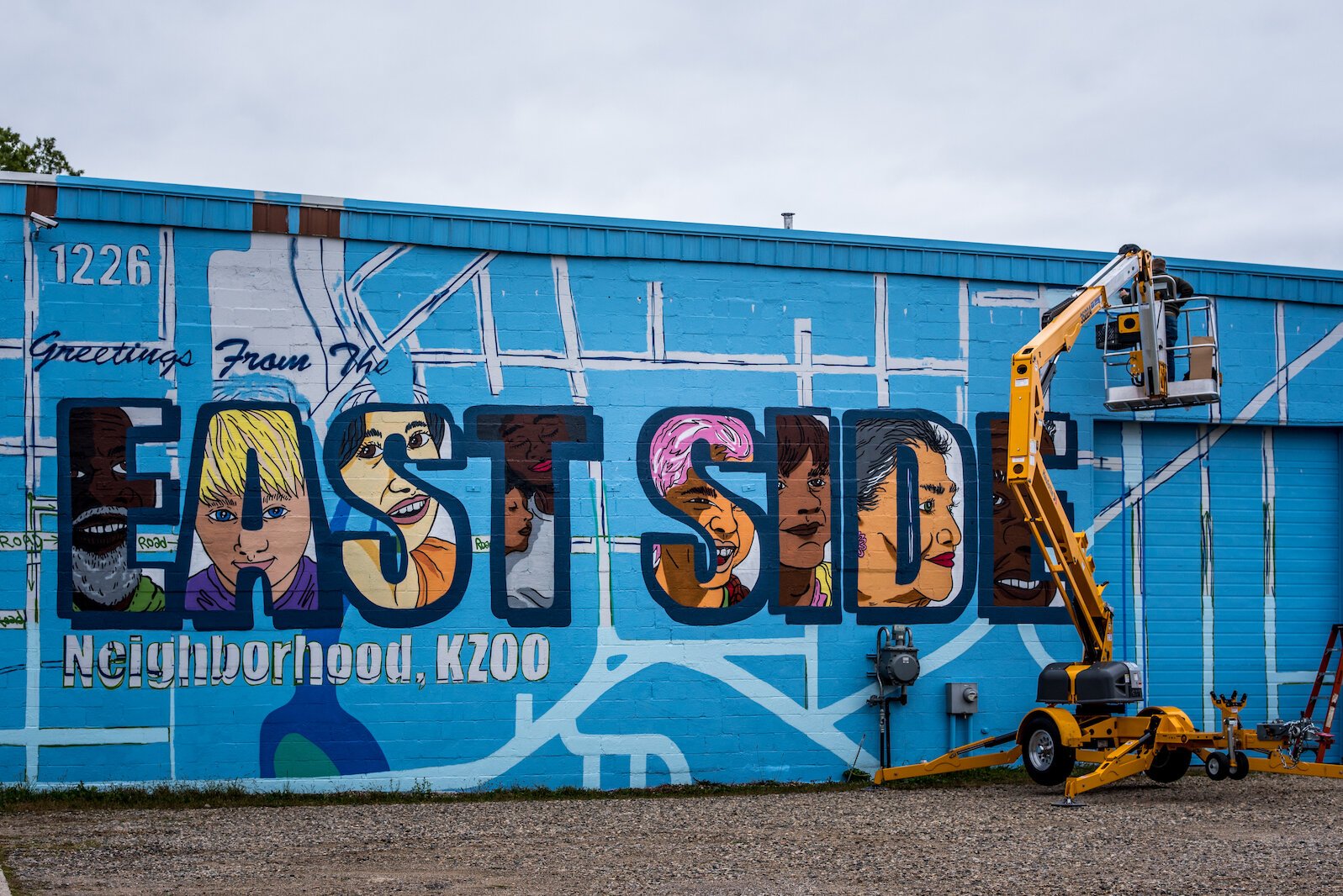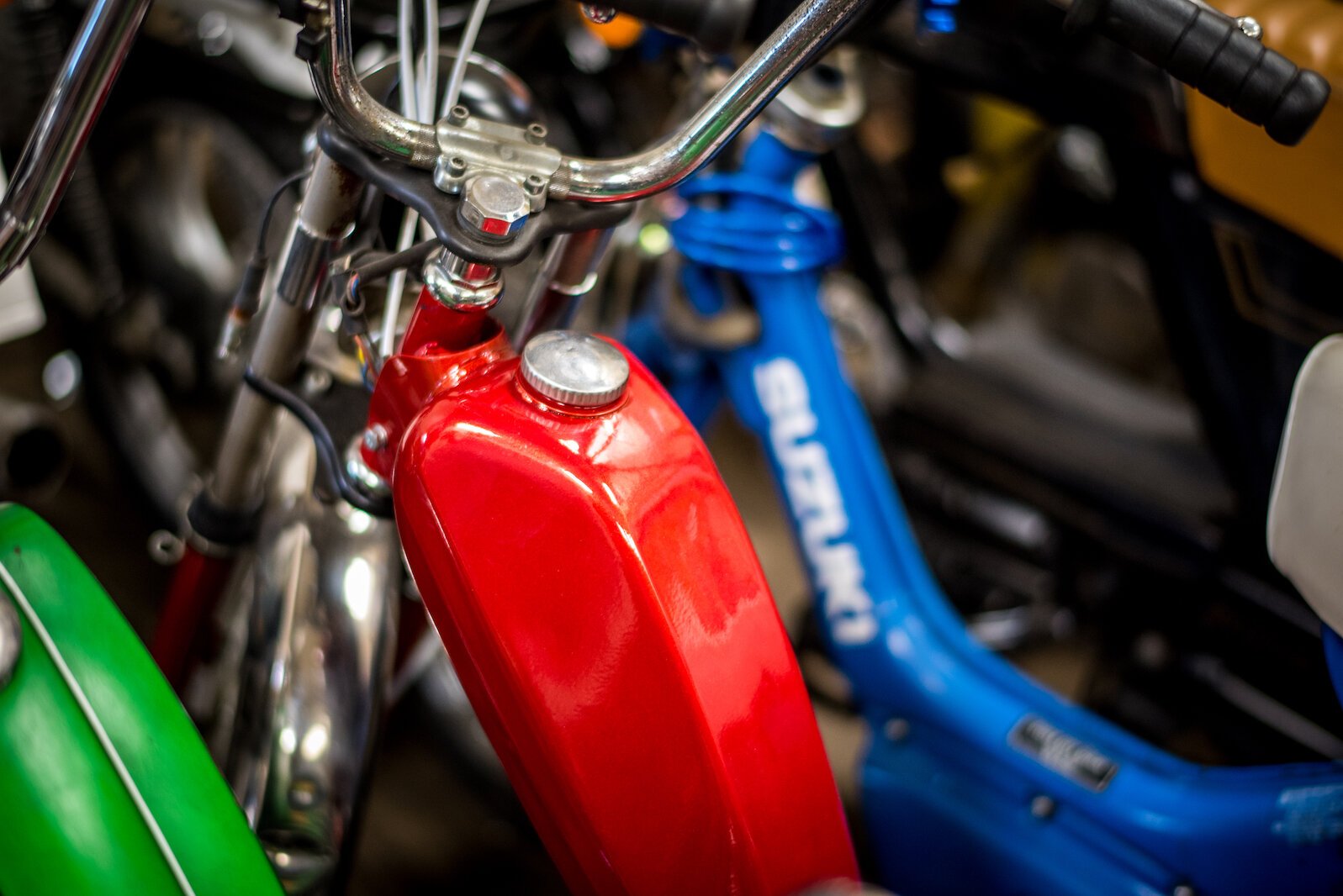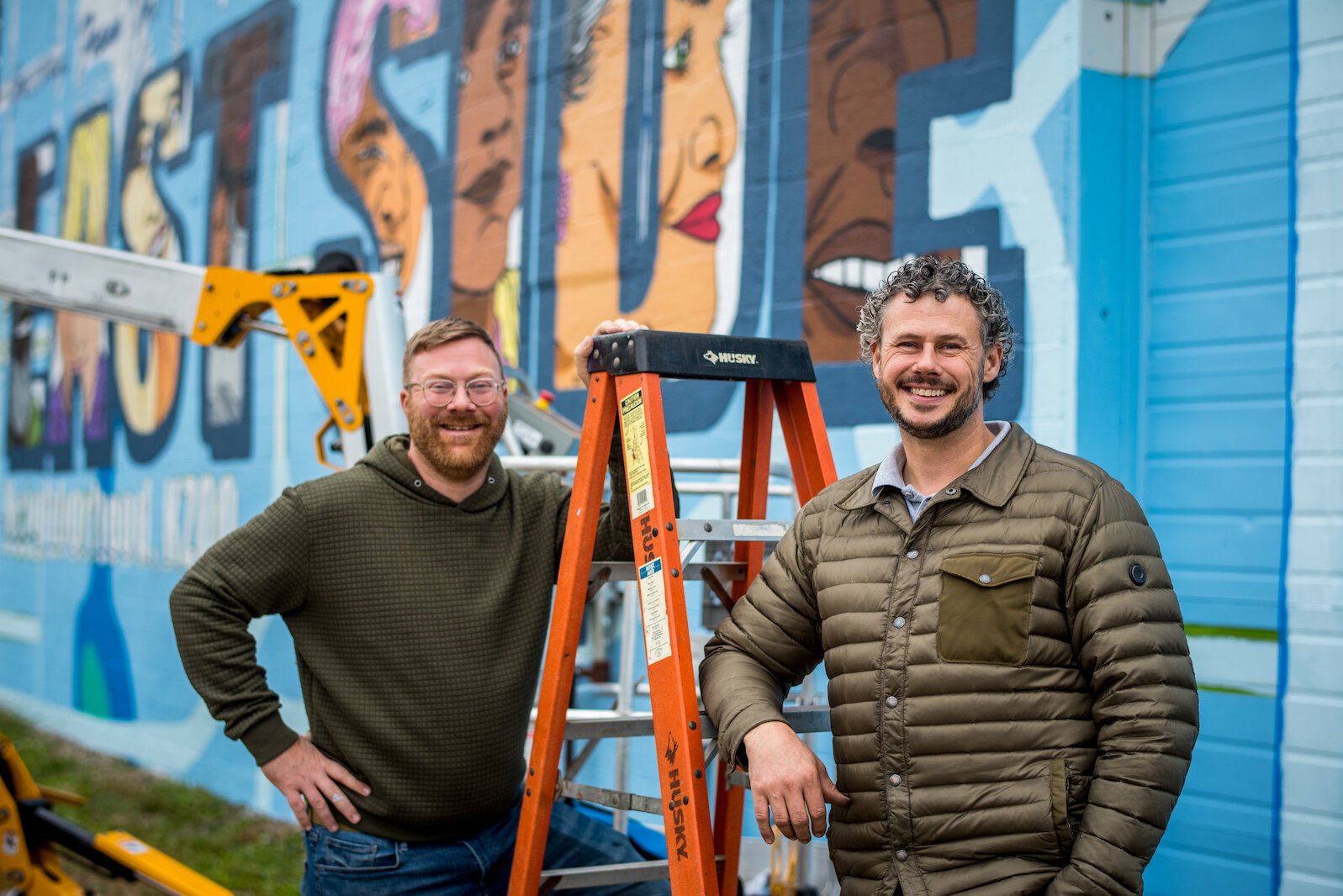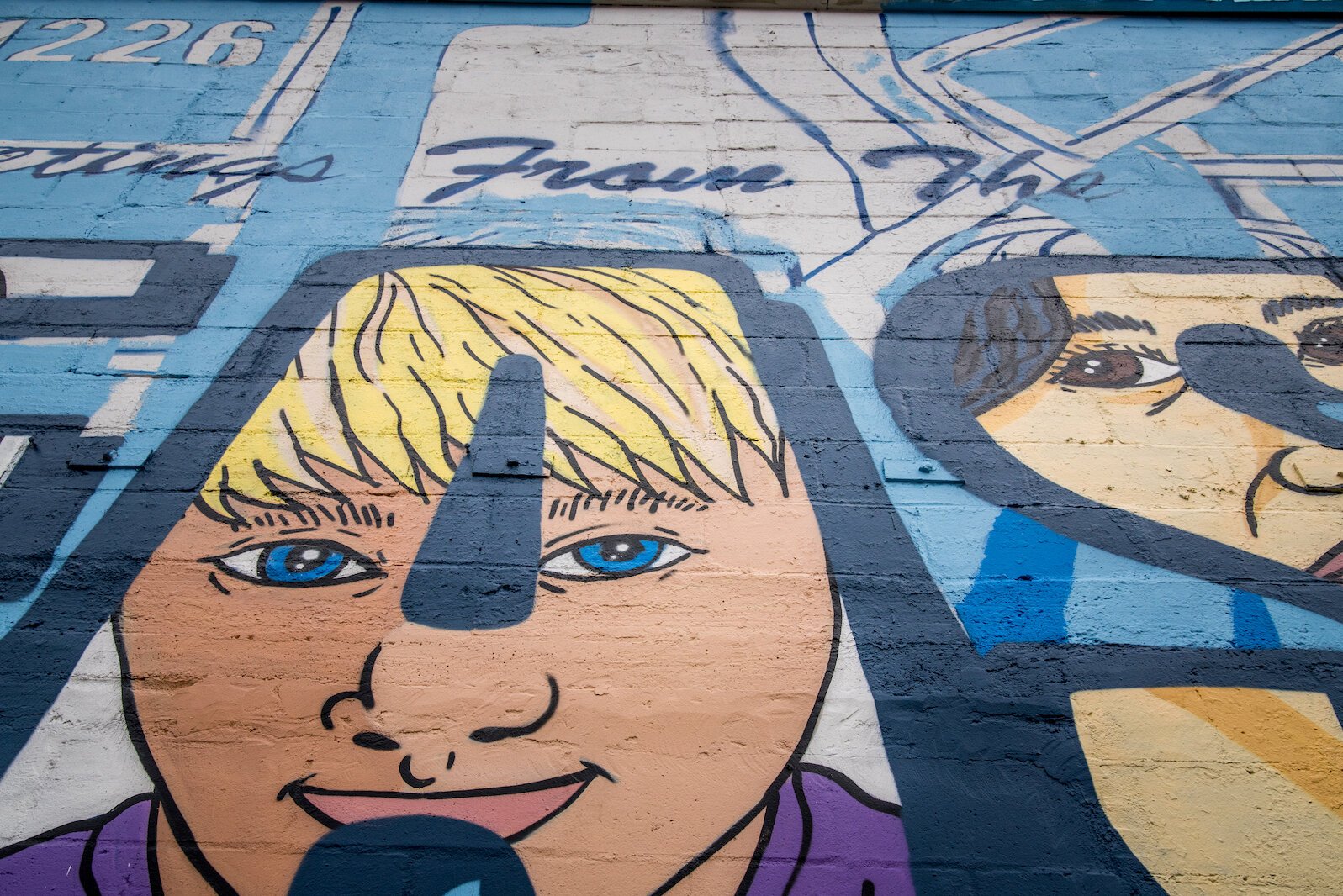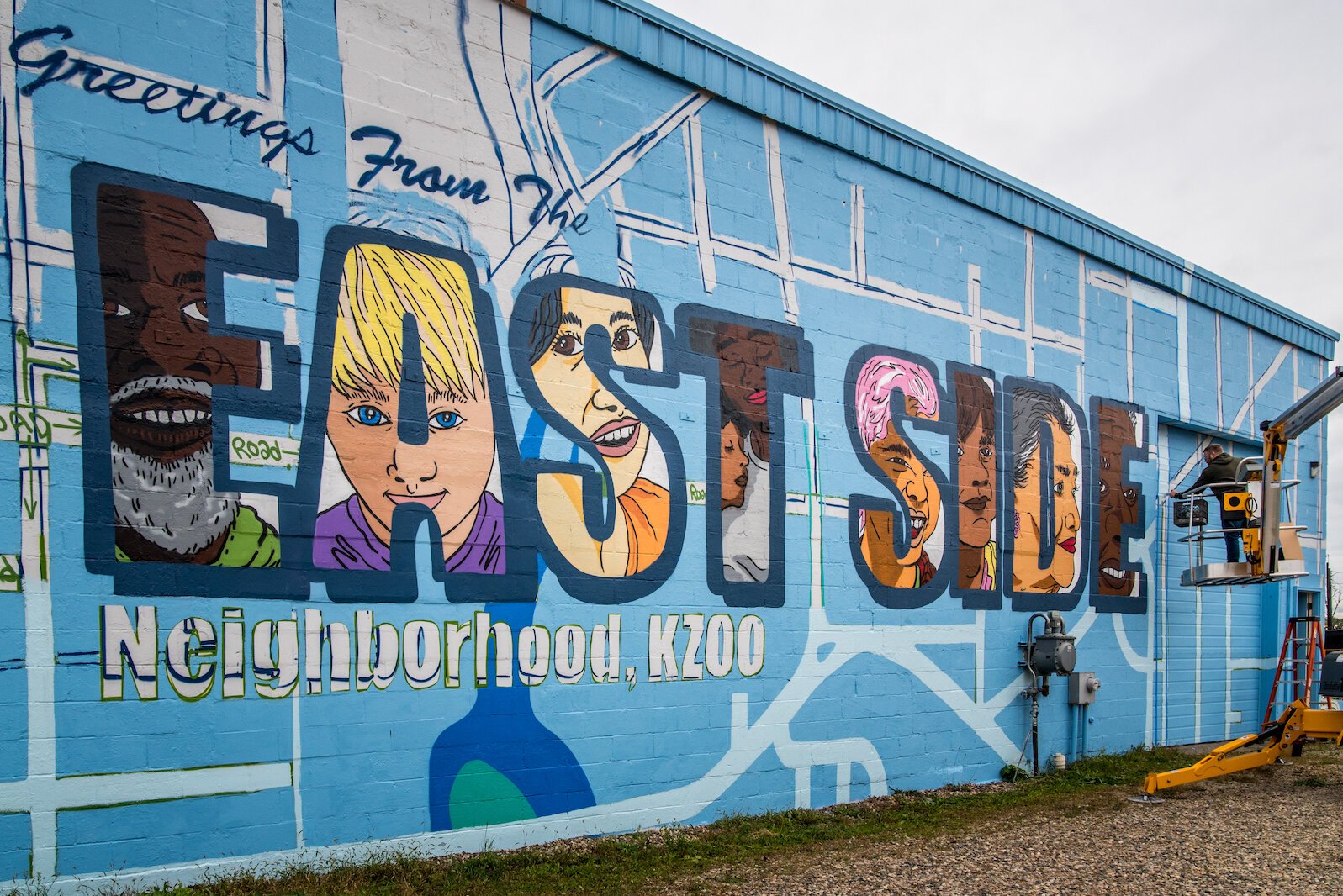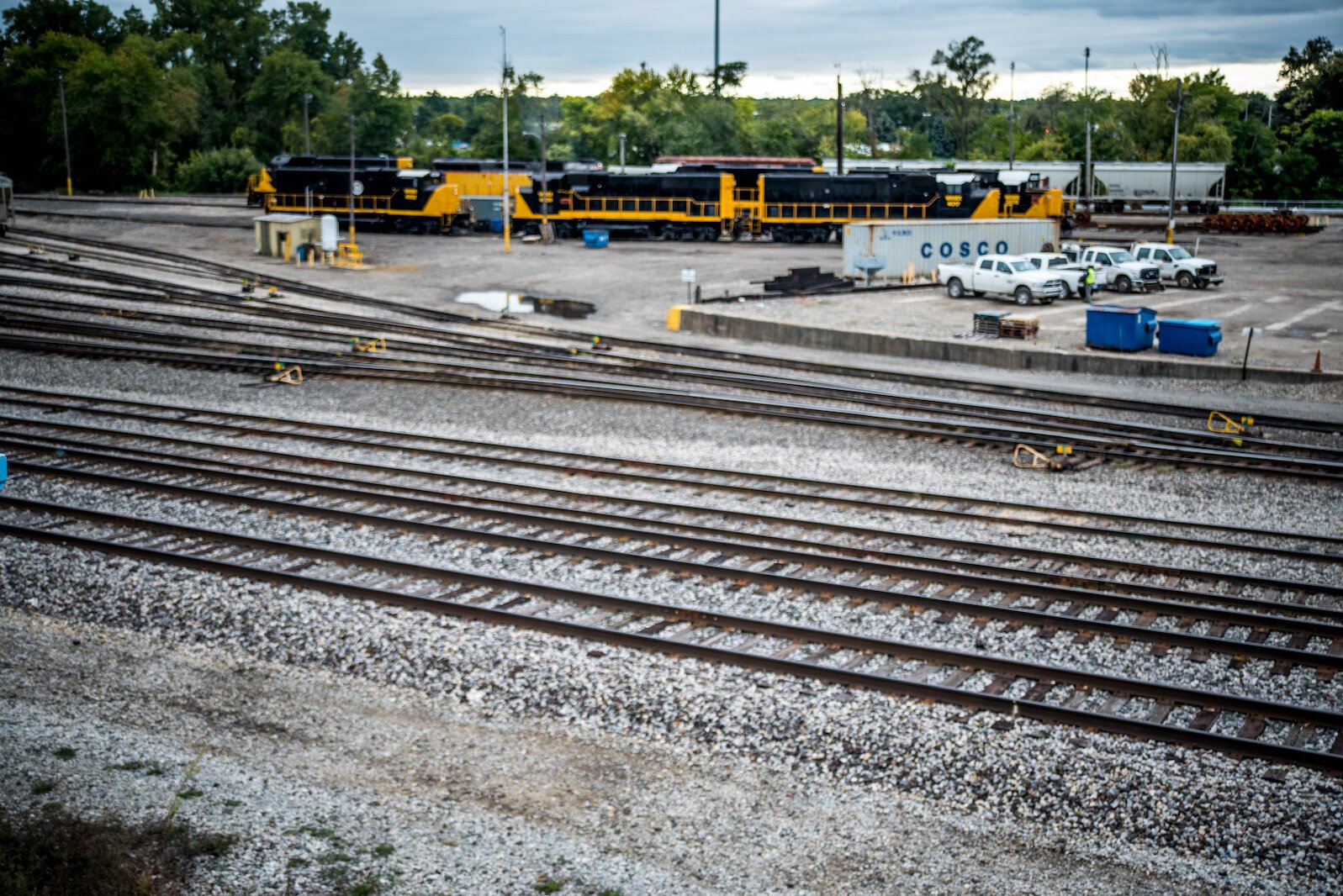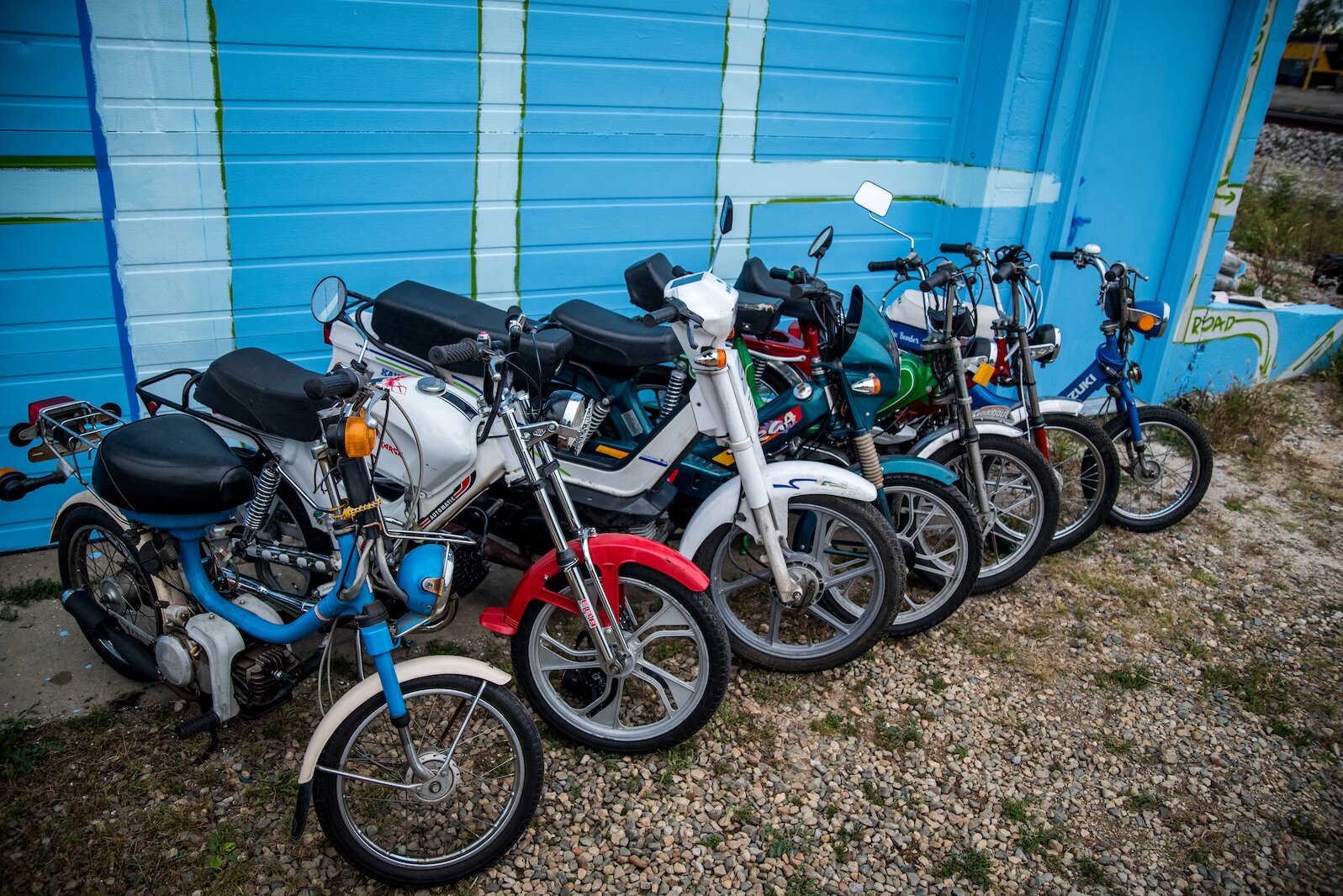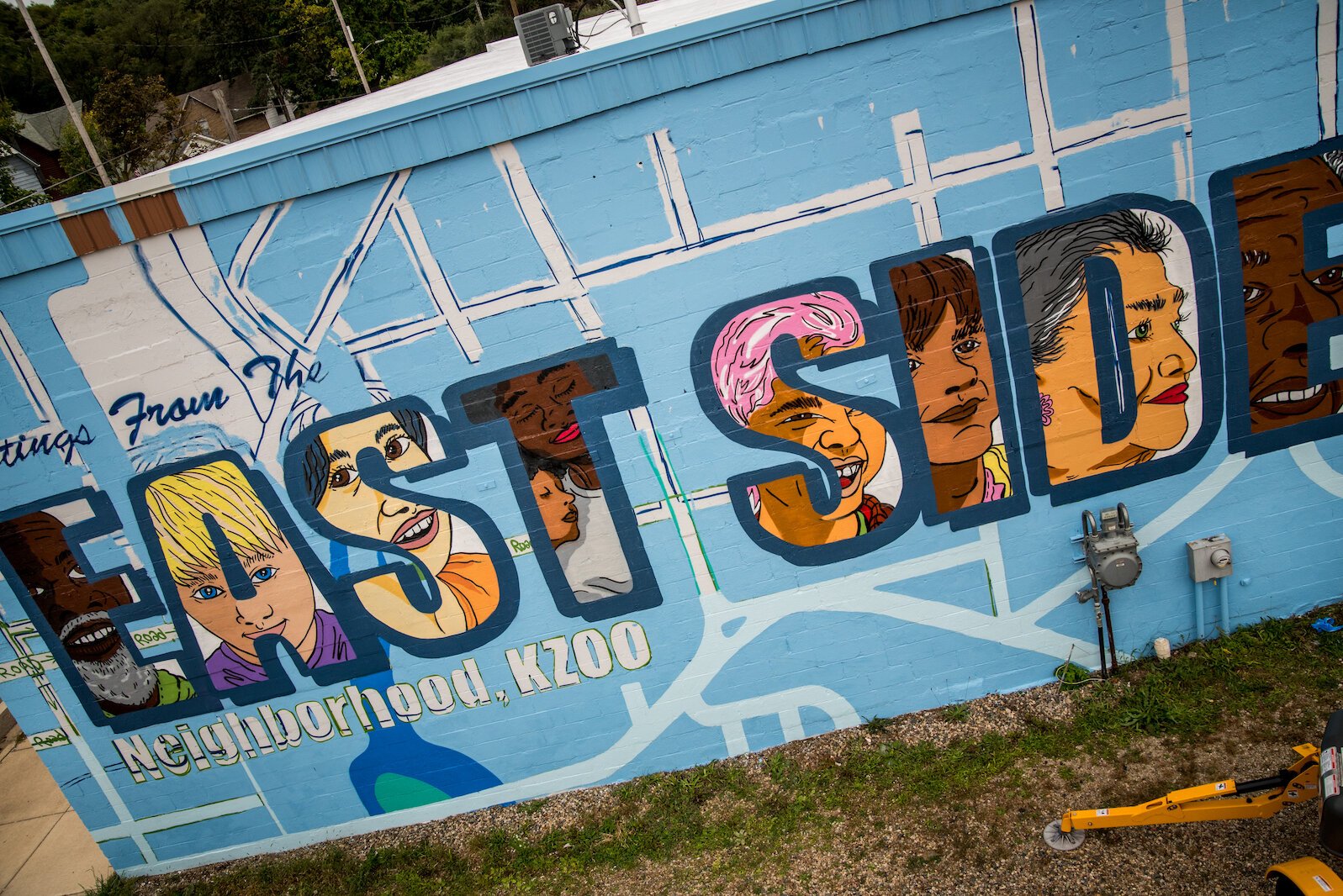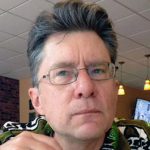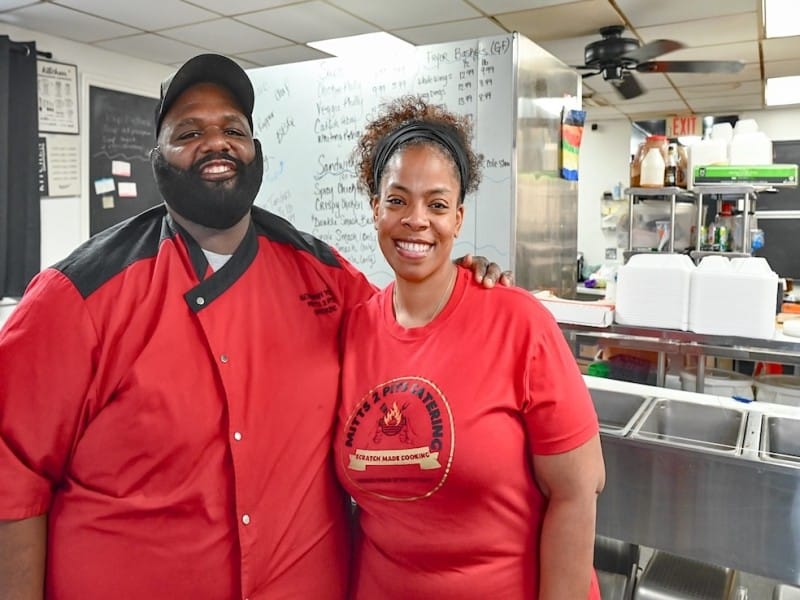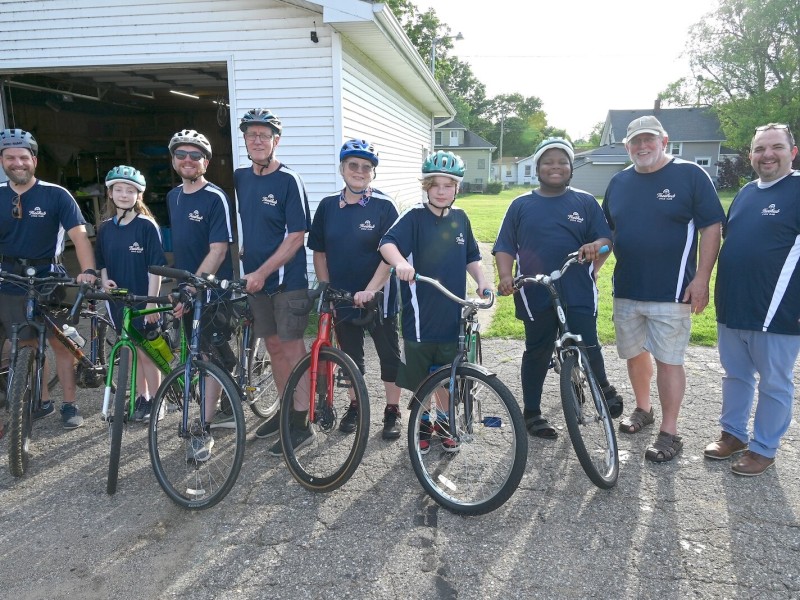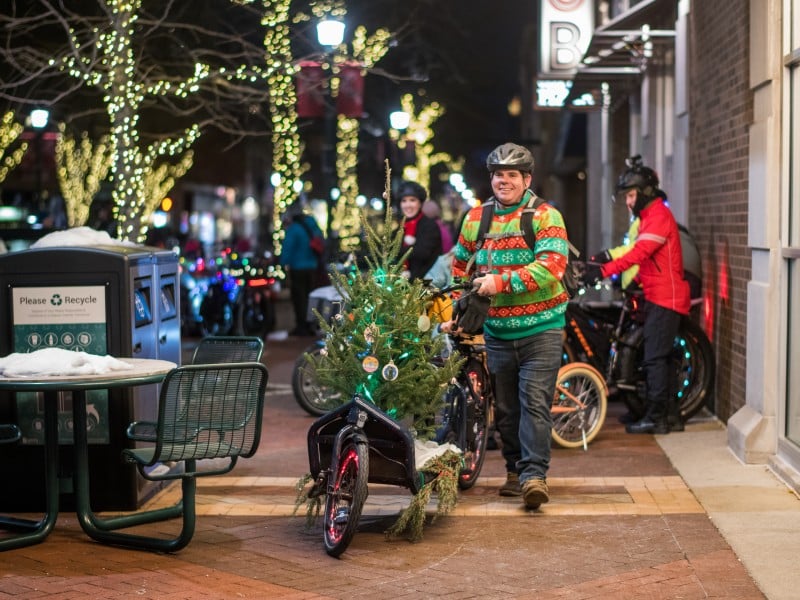Editor’s note: This story is part of Southwest Michigan Second Wave’s On the Ground Eastside series.
Murals and mopeds are going to be at the heart of an Eastside building.
Husbands Patrick Hershberger and Chad Burke purchased what was an old detailing shop at 1226 E. Michigan Ave.
“One part moped-everything, one part art studio and storage,” Hershberger says.
The outside was the third part that got Hershberger’s attention. Like a lot of Kalamazoo’s old industrial buildings, it’s simply there, a windowless box with railroad tracks just behind it. For seven decades it’s been the only scenery for road users and the people living in the Eastside neighborhood to its northeast. Dingy painted cinderblock, built with no style sometime around 1950.
Artist/muralist Hershberger says, “When I saw this building, personally, it was four blank canvasses.”
His instinct is to reach for his spray cans. “But I want those canvasses to be community-oriented.”
Quarterkick
Burke saw a secure, windowless space for his inventory of classic mopeds.
For 14 years Burke had rented an industrial space on Palmer in Edison for his moped business Quarterkick.
Specifically, “Vintage European pedal-style mopeds,” Burke says. Starting from the 1950s and up, “They just come in every shape and size, design. I’ve got them from Italy, Germany, Austria, Czechoslovakia, Holland, Spain, Portugal, France… just a ton of variety,” he says.
“I got my first one back in ’87, and I’ve been wrenching and riding and working on them ever since. My mom taught me how to rebuild my first engine.”
Through repair manuals tossed out by libraries, Burke taught himself moped mechanics and joined a community of others who love the little powered bikes. Before COVID, moped rallies, rides, and builds have been a part of his life from his own annual CBBG (the Chad Burke Build and Gather, which is set to return in-person Dec. 8-12), to meets in Italy.
He’s toured the country on little bikes meant for city rides. His most memorable was a 1,860-mile ride from Nebraska to Oregon, “though four mountain ranges, all of 14,000 feet of elevation change, and that’s the fifth time I’ve done one of these 1,000-plus mile rides. Part of it is the challenge of making something that’s not designed to go that far, work.”
He continues, “They’re fun… You feel free. Being on the open road, with that much around you open and exposed, it is very Zen. I mean, you’re just more connected — you hear more, you see more, you smell more, you’re just more in touch with your surroundings.”
Hershberger says, “If you can’t tell, this is his passion.”
They both laugh. Chad says, “and Patrick, he kind of– “
“I married into mopeds.”
Hershberger isn’t that into the mopeds?
“No, that’s the thing. I’ll never be someone that wrenches on them. I will ride them. I’ll hang out and have fun and meet people and be part of the community, but it’s not something that came naturally to me. I didn’t come up in it.”
“It’s my job to keep his bike running,” Burke says, laughing.
Chadrick LLC
They have differing passions, yet they looked to the future, realized that owning is better than renting, and that Hershberger needed more space for his art than the cramped studio in their Edison home. They formed Chadrick LLC and purchased 1226.
The building has around 6,700 square feet, including an upstairs and basement. It came with land that includes an empty lot by the Kalamazoo city water pump station.
“I am not always the most positive person when it comes to looking for new things,” Hershberger says. “When he said, ‘hey, we have a tour of this new place.’ I came over really skeptical. I left being like, ‘this is perfect.'”
“We have very different things that we do,” Hershberger says, but the building can accommodate them. He’ll have paint storage and studio space, perhaps a gallery space to show his work. Burke has high ceilings for multiple shelves of bikes, and areas for bike mechanics, painting, and bodywork.
They purchased the building in November. Since both have day jobs, it’s been nights and weekends of working on the building, dealing with needed upgrades and the building’s idiosyncrasies.
Upstairs from Hershberger’s studio space used to be a secret apartment. In 2008, the former owner “suspected something was above the room, so he put a hole through and discovered a fully-furnished apartment,” Hershberger says.
What was there looked to be from 1985. It likely was inhabited from the mid-1960s to the mid-1980s. Burke says that there must’ve been stairs outside the building, going up to a door, and “at some point they had walled off the door and taken the stairs down.”
Unfortunately, the 20-year-old time capsule was cleared out. The former owner “was very driven by what’s profitable, and to him it was just a bunch of old junk sitting in a room,” Burke says.
The two have no time to get distracted by the secrets of 1226, with a nation of mopeders looking to arrive for the CBBG in a couple of months, and with blank walls to cover with murals.
Does it feel overwhelming?
Both speak at once:
“It can,” Burke says
“Every day,” Hershberger says.
“Well, I’m here every day,” Burke says.
“Yeah, but my anxiety makes it every day, so…” They both laugh.
“We both realize this is a long-term project,” Hershberger says. “This is something we both hope can continue into our entire life. It’s not going to be our home, but it’s going to be our shop away from home. We want to grow into it.”
“I’m hoping for next spring,” Burke says, as for when the building is running at 100%. “There’s a lot to set up. It took me 14 years to build the old shop into what it became.”
Representing the neighborhood
Hershberger’s first mural as a gateway to a Kalamazoo neighborhood was for Edison, a street scene of 1940s Washington Square. It went up in 2019, on Howard’s Party Store at Stockbridge Avenue and Portage Street.
While working on it, residents would chat with him. “One of the things people asked is, is this mural going to look like the neighborhood?” he says.
Though the scene is from the 1940s, it needed to represent the people of the diverse neighborhood as it is today. So he added people of various colors to the street scene, and with each, he’d hear, “This represents me,” from observers.
He knows that public art “has to be equitable, and it has to represent the community that it’s located in.”
The southwest side of 1226 serves as a perfect spot for an Eastside gateway mural, greeting the traffic going through on E. Michigan. On a background of a neighborhood, map are large block letters, “EAST SIDE,” with faces inside the letters. The message is obvious, that a neighborhood is people.
Hershberger had help. Local kids and adults, through the neighborhood’s Peace House and the Eastside Neighborhood Association, took up brushes to fill in the artist’s outlines.
“There’s been a lot of good energy and reactions while he’s been doing the mural,” Burke says. People would honk or cheer going by, “seeing something go on that represents their area.”
“It feels happy to have this space,” Burke says. “And working with the community. We’re looking for the things that we can do to uplift this area.”
Hershberger has three more blank canvases, but, “My goal is not to just rush and put a bunch of things up on the walls. I want it to be projects that make sense within the community,” he says.
He wants the neighborhood to be involved, he knows that much — “whether that be me painting them, whether it be a group project, whether that be an outside artist.”
He adds, “I’d like to think that we could be good neighbors.”

